

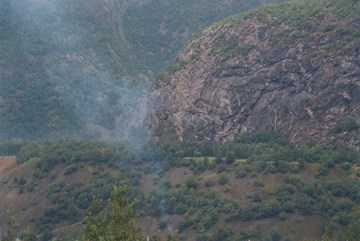
The Viking farm at Ytre Moa is the most comprehensive farm complex we know in Norway from the Viking Age (800 – 1050 AD). The farm dates from the 9th century when much land was cleared for cultivation. For some unknown reason the farm was deserted, most likely towards the end of the 10th century. In the excavations from 1964 to 1966 six house sites and about 20 burial mounds were found.
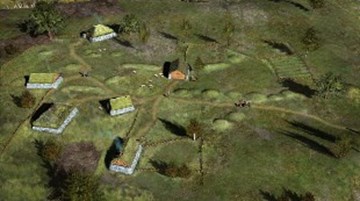
In addition to six house sites, 20 burial mounds and a menhir (memorial stone) are located on the Moa terrace. Some of the burial mounds are found in among the houses, whereas the majority is gathered in a row, east of the farmyard. The mounds vary in size and form, being round, oval or oblong. Only a few of the burial mounds at Ytre Moa have been investigated. In addition, a grave under level ground has been excavated, and a boat-shaped area of paved stone. The latter is probably a boat grave. All the graves were archaeologically excavated at the same time as the house sites in the summer months of 1964-1966.

A rich selection of objects has been found at Ytre Moa, both meant for ornaments and ordinary use. The objects tell us something about the life and work at the farm, how the soil was cultivated, what kind of domestic animals they kept, as well as how they were dressed. Some of the objects indicate that the farming activities at Ytre Moa have given a certain surplus, at least enough to buy or barter beautiful jewellery and glass. Some of the objects are also important indicators in a dating context. This is particularly the case with some of the pieces of jewellery. They show that the farm was settled in the period between 700 and 900 AD. Few finds have been registered that can be dated to after the 10th century, and this most likely means that the farm has not been in use after that time.
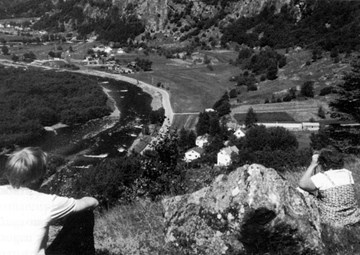
In the spring of 1964 there was some cultivation work going on at the farm of Skaim. This work included removing some rock heaps left from clearing the fields and the bulldozer then touched some rather big rock slabs at the bottom of the heap. Lars Vikesland, the elder, realizing that this could be an old grave, stopped the work and contacted the local bailiff, who in turn contacted the Historical Museum in Bergen. The museum sent experts to the site and they quickly established that this was a prehistoric grave find. The excavation was soon under way, and a new chapter was added to the oldest part of the history of the farm.
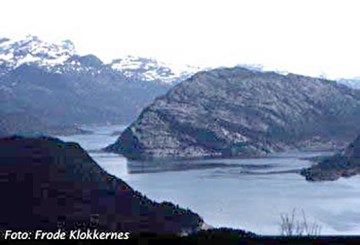
Stakaldeneset is a barren and west-facing point that rises steeply from the Eikefjord at the strait of Helgøysundet. In the late 1970s, Svein Brandsøy made a find which meant that the textbooks on the Stone Age in Norway had to be rewritten.

Gulatinget was the assembly site for the jurisdiction of western Norway. From the early 10th century and for a period of about 400 years, the assembly at Gulen played a key role in the judicial system of this part of the country.
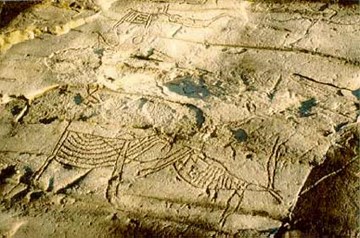
The Vingen site is today the second biggest rock-carving field in Norway with some 2000 figures. Nevertheless, it was a stroke of good luck that made this place known to the outside world in 1912.
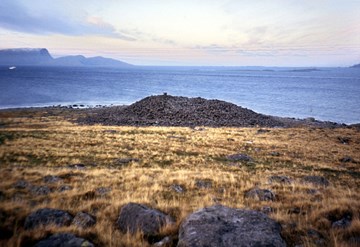
On the mainland side of Bremanger, close to the border to the municipality of Flora, lies the hamlet of Botnane with the farms of Øvrebotnen, Sørbotnen and Nordbotnen. Today there are eight burial mounds at Botnane, some of these can be easily seen along the road. It is assumed that they were all built in the older Bronze Age, about 1800 to 1000 years BC.
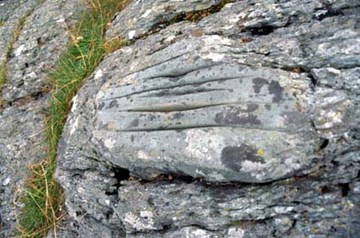
The rocky ground in Solund did not invite people to carve art into it. But there were numerous shelters which were suitable as living quarters for the early hunters, and they did not have to travel far to find food.
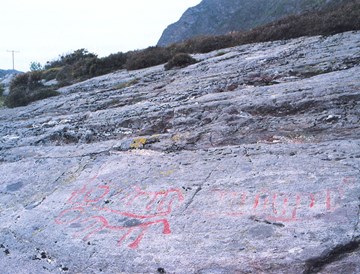
On the weather-exposed Staveneset, one of the westernmost points on mainland Norway, we find ancient traces of human activities.